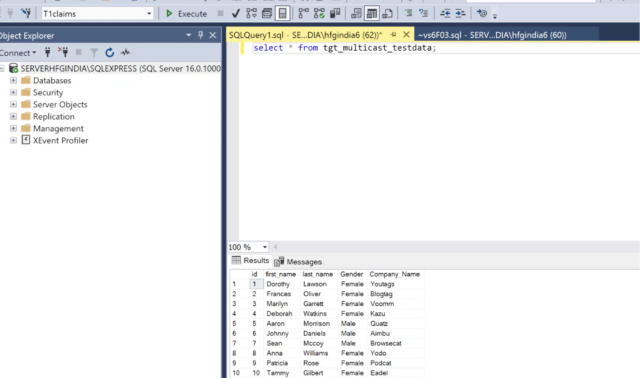MULTICAST TRANSFORMATION IN SSIS
Multicast Transformation:-
Multicast Transformation in SSIS sends input data to multiple destination paths without applying any conditions or transformations. OR, SSIS multicast transformation takes ONE Input, makes the logical COPY of data, and passes the same data to multiple outputs.
Procedure:-
INPUT:-
- Go to file manager and check the source file as shown below.

- we need to create package under integration services project3
- Under solution explorer we need to rename the package as required. i.e multicast.dtsx.
- Drag and drop the data flow task from the ssis toolbox to the control flow.

- double click on data flow task and drag and drop the flat file source from the ssis tool box to the data flow task.
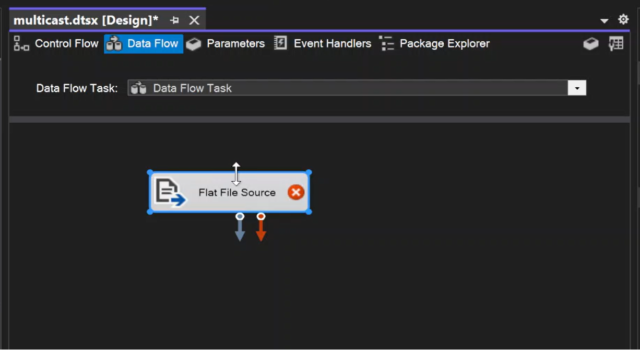
- Double click on flat file source and click on new and specify the connection manager name.
- Click on browse to browse the file and click on preview to preview the source data as shown below.

- Drag the multicast transformation from the SSIS tool box and connect it with the source.
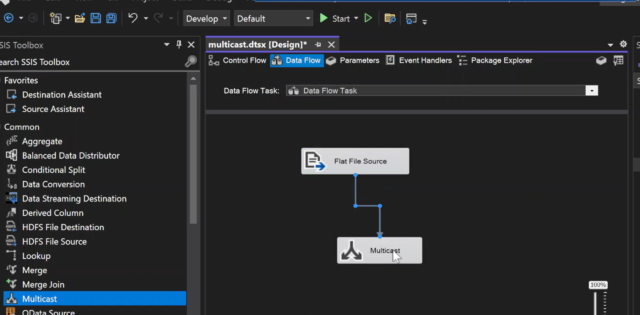
- Drag the flat file destination and OLEDB destination from the SSIS tool box and connect both to the multicast transformation.

- Double click on flat file destination and click on new and specify the connection manager name as destination.
- Create a target file in the file manager and browse the target file and check the box column names in the first data row.
- Click on columns to check the columns and click on preview to preview the data.
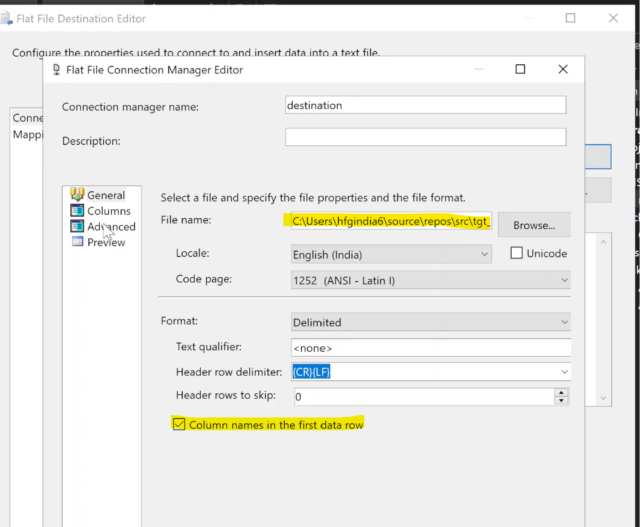
- Click on mappings to check whether the input columns are matched with the destination columns and click on ok.

- Click on the OLEDB destination it will navigate to connection manager and click on new and specify the connection and click on new and specify the table name as shown below and click on ok.
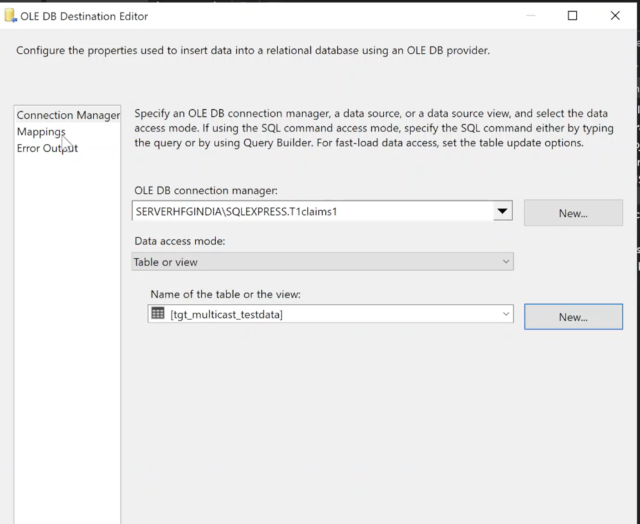
- Click on the mappings and check as the input columns match with the destination column.

- Click on start and execute the package here package got executed.
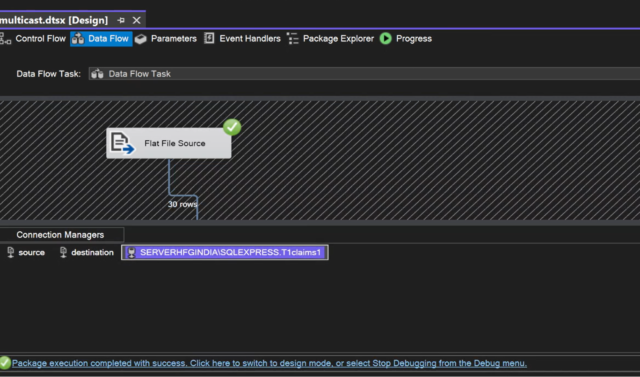
OUTPUT:-
- Go to file manager and check the target flat file as shown below
- As we have used multicast transformation so we get the copies of source data to multiple outputs i.e flat file and oledb destination table.

- Out put of OLEDB destination table.
